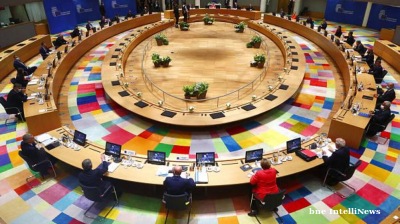Romania’s economic growth eased to 8% y/y in the third quarter of the year from 13.8% y/y in Q2, while the average annual growth rate for the entire January-September period was 7.1% y/y, the statistics office INS announced in a flash estimate.
The high growth rates still indicate the economy is operating in recovery mode and they incorporate significant low base effects — but more detailed analysis such as the quarterly or longer-term metrics show a visible slowdown that is likely to reverse in the coming quarters yet significant uncertainty is generated by a multitude of factors.
Already in its fifth quarter of recovery after the lockdown quarter last year, Romania’s economy exceeded its pre-crisis peak (reached in Q1, 2020) in Q2 this year and it further advanced in Q3, yet was slowing down, as some industries (automobile production, oil refining) were hit and the whole economy came under pressure from rising energy prices.
Further growth, broadly seen as 4-5% per annum in the coming years, remains for the next quarters subject to various risks ranging from more COVID-19 waves (at home and in Europe), high interest rates, high energy prices, political uncertainty (hence fiscal uncertainty) and sluggish recovery of the global production chains.
The main growth driver, expected to boost the country’s GDP over the coming years is the Recovery and Resilience Plan but, despite a front payment expected this year, more clarity is still needed in regard to the specific projects included and schedule for completion next year.
From a broader perspective, economic growth remains weak in the post-lockdown period and particularly eased in Q3. Compared to the same period in 2019 and annualised, Romania’s economic growth eased to 0.6% in Q3, down from 1.2% in Q2.
The INS estimates the quarterly growth rate in Q3 at 0.3% q/q, visibly down from 1.5% q/q (revised from +1.9%) in Q2 and 2.2% q/q (revised from 2.6%) in Q1.
As expected, the quarterly growth rates were backwards adjusted as the seasonal pattern is changing and has significantly deviated from the long-term pattern since it incorporates non-seasonal events such as the lockdown in 2020 and sudden recovery this year.

Data

Belarus reports modest GDP growth 1.6% in 8M25
Belarus’ economy expanded by 1.6% in the period from January to August 2025, according to preliminary estimates from the National Statistical Committee, state news agency BelTA reported on 17 September.

Most Ukrainians reject Russian peace plan, back continued resistance, poll shows
An overwhelming majority of Ukrainians remain committed to resisting Russia’s invasion and reject Moscow’s latest peace proposals, even as many recognise that the war is unlikely to end soon, according to a new survey by the KIIS.

Young Bulgarians turn to stocks over real estate, survey shows
Real estate remains the most popular option overall but younger investors are leading a shift towards stock market investing, says survey commissioned by Revolut.

State of global democracy - Statista
The Economist Democracy Index rates countries on the state of their governing system each year. In the latest edition, corresponding to the year 2024, only 25 countries (6.6% of the world's population) have been rated as "full democracies"



